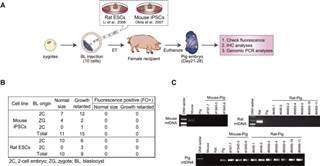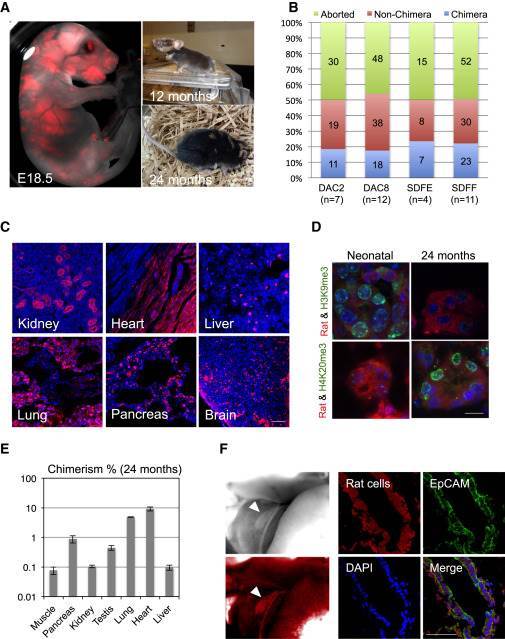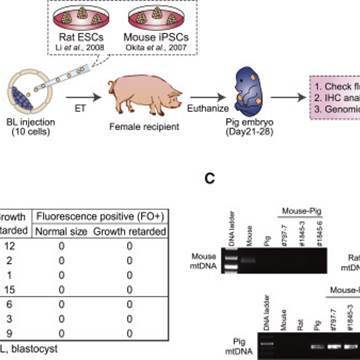Scientists said Thursday they had produced pig embryos that carry human cells in a new step toward making animals whose organs could be transplanted into people.
The embryos did not grow into part-human piglets and the technique was far from perfect, the researchers reported in the journal Cell. And these are not the first animals that are part human, part-animal.


But it’s the first time this particular technique has been used to make chimeras — animals with parts from two different species.
The experiments being done by Juan Carlos Izpisua Belmonte at the Salk Institute in California and colleagues are controversial. The National Institutes of Health only proposed lifting its ban on funding such work last August.
The team followed guidelines issued by the International Society for Stem Cell Research.
Belmonte said the embryos are only grown long enough for different types of tissue to develop clearly. These particular embryos had some human muscle cells, for instance.
“It clearly demonstrates that human stem cells introduced into the early pig embryo can form a human-pig chimera.”
But animal-human chimeras are nothing new.
The same team grew live mice with human cells. There’s a herd of cattle in South Dakota with human immune systems that are used to make experimental antibody treatments.


There are sheep spliced with human genes that produce human proteins in their milk for treating a rare lung disease. Scientists have created pigs that produce human blood and injected human stem cells into paralyzed mice to help them walk again.
Related: GM Cattle Might Produce Ebola Cure
Animal-human hybrids can be used as sources for organs to transplant, for blood and for immune system products.
According to the United Network for Organ Sharing, 118,744 people are on waiting lists for an organ transplant. Organs with human DNA would be more likely to survive transplant into a person.
Chimeras can also be used to test experimental drugs or to study disease.
They can be made using genetic engineering or gene editing. These pig chimeras were made by first producing human induced pluripotent stem cells — a type of basic master cell made from human skins cells in a lab dish using genetic tricks.
Related: Scientists Create Part-Human Animals
They were injected into pig embryos made using another trick called parthenogenesis — a technique for jump-starting unfertilized egg cells into developing as if they had been fertilized.
These balls of cells were implanted into sows and then taken out a few weeks later.
The result was never likely to be a live piglet and the method was inefficient. It worked well enough to show the human cells were in the embryo, however, Belmonte’s team said.
“It clearly demonstrates that human stem cells introduced into the early pig embryo can form a human-pig chimera. This is the first scientific publication to achieve this result,” said Bruce Whitelaw of the Roslin Institute in Scotland, where Dolly the sheep became the first mammal to be cloned in 1996.

![[World Alzheimer’s Day] Samsung Research Advances Early](https://loginby.com/itnews/wp-content/uploads/2025/09/1758375215_World-Alzheimer’s-Day-Samsung-Research-Advances-Early-238x178.jpg)





